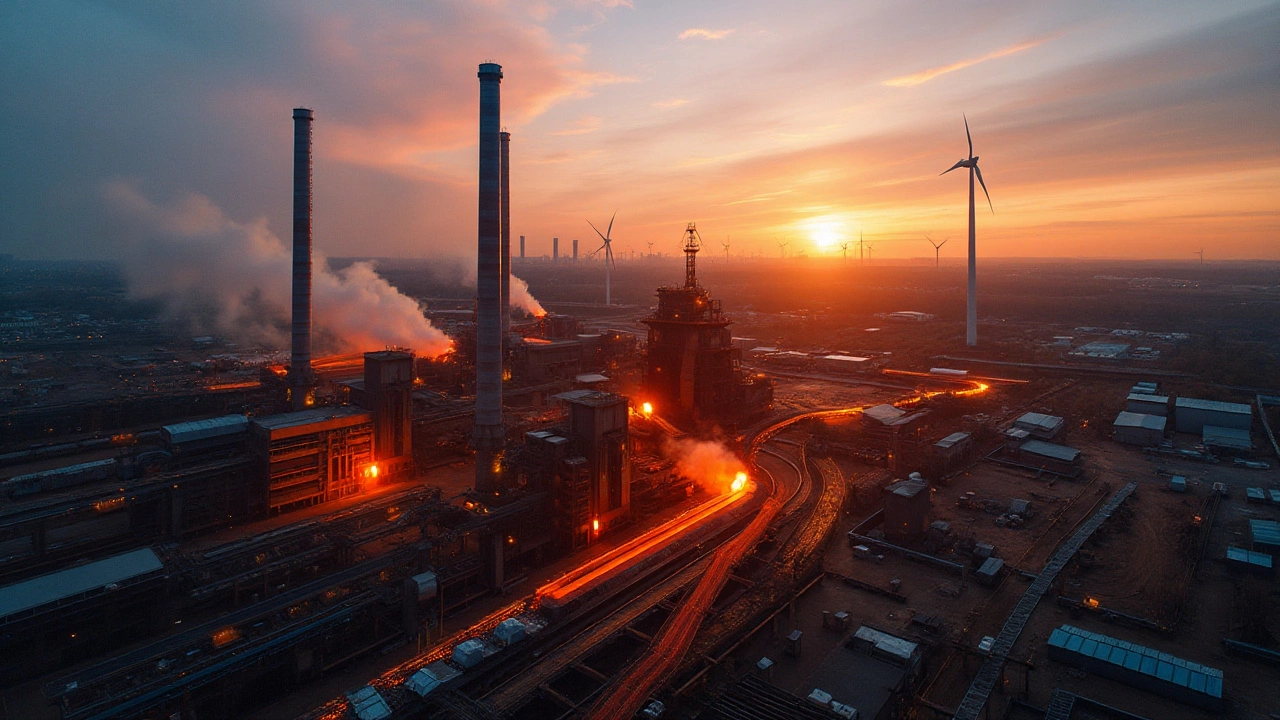USA Steel Production – What You Need to Know
If you’re curious about how much steel the United States makes and where the hot spots are, you’re in the right place. The U.S. still ranks among the world’s biggest steel producers, but the landscape has changed a lot over the past few decades. Below you’ll find the most useful details – from the biggest steel towns to the trends shaping the industry today.
Where America’s Steel Is Made
The nickname "Steel City" belongs to Pittsburgh, Pennsylvania. That’s where the iron and steel boom began in the 19th century, and the city still hosts major plants that turn iron ore into flat‑rolled sheets, bars, and beams. Another historic hub is Birmingham, Alabama, often called the "Pittsburgh of the South." Both cities still produce a sizable share of U.S. steel, but new centers have emerged.
Today, the biggest production zones include the Great Lakes region (especially Indiana and Ohio), the Midwest (like Illinois and Michigan), and the southern corridor around Texas and Alabama. These areas benefit from close proximity to raw material shipments, abundant water sources for cooling, and a skilled workforce that knows the ins and outs of steelmaking.
Current Output and Trends
In 2023 the United States produced roughly 70 million metric tons of finished steel, a level that’s steady but below the peak of the early 2000s. The dip reflects a mix of factors: tighter environmental rules, competition from cheaper imports, and a shift toward high‑tech steel products. American mills are now focusing more on specialty steels used in automotive, aerospace, and renewable‑energy equipment.
Technology is another game‑changer. Many plants have added electric‑arc furnaces, which recycle scrap metal and cut CO₂ emissions compared with traditional blast furnaces. This helps meet the stricter emission standards that were introduced after the U.S. rejoined the Paris Agreement.
Trade policies also play a big role. Recent tariffs on imported steel aim to protect domestic jobs, but they can raise costs for downstream manufacturers like car makers and construction firms. The net effect is a tighter market where U.S. producers need to stay competitive on price and quality.
Looking ahead, the industry expects growth in “green steel” – steel made with renewable energy and low‑carbon processes. Companies are investing in hydrogen‑based reduction methods and partnering with wind and solar farms to power their furnaces. If these projects succeed, the U.S. could regain some lost market share and offer a cleaner product to global buyers.
For anyone watching the U.S. steel sector – whether you’re a supplier, a buyer, or just an enthusiast – the key takeaway is that production is staying strong but adapting fast. The classic steel towns like Pittsburgh and Birmingham still matter, but new hubs and new technologies are reshaping the map.
Use this snapshot to gauge where the opportunities lie: specialty steel demand is rising, green‑steel projects are getting funding, and regions with strong logistics networks continue to attract investment. Keep an eye on policy shifts and environmental regulations, as they’ll dictate the next wave of change in U.S. steel production.

American Steel Production: A Resilient Industry on the Rise
American steel production remains a vital component of the country's industrial backbone. Although the industry has faced challenges, including international competition, it has adapted through innovation and sustainability efforts. This article explores the current state of steel manufacturing in the USA, offering insights into key players, technological advancements, and the future of the industry. Discover how American steel makers are balancing economic pressures with environmental responsibilities to maintain their competitive edge.
